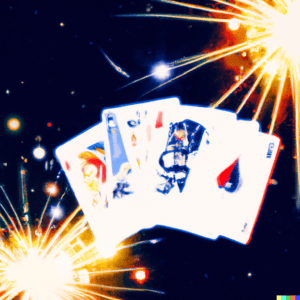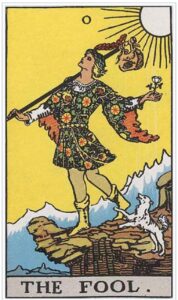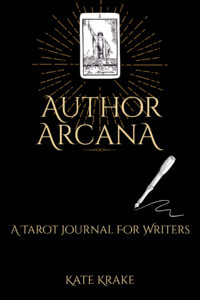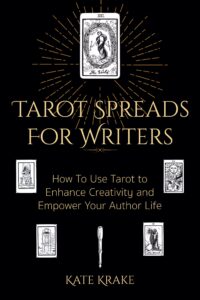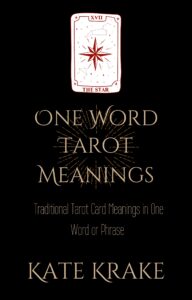Why Are Writers So Drawn To Tarot
Tarot cards are obviously not exclusive to the world of writers and writing, but there is a definite affinity to tarot in the writing world, in spiritual and non-spiritual writers alike.
The reasons tarot attracts writers are infinite, but I think for many writers, and definitely for me, the primary allure of tarot as a writing tool comes in three areas:
- Human Archetypes
- Creative Freedom
- Pause and Reflection
1. Human Story Archetypes and Endless Stories
Tarot decks tell stories.
From unknowing to knowing, from trauma to recovery, death to rebirth. The two arcanas have their story arcs, the suits cards have their arcs, and the cards themselves have their own visual story.
Tarot cards represent most (every?) archetype of human experience. Add in your own intuitive readings based on your experiences of those archetypes and I believe there isn’t a single thing in life that can’t turn up in a potential reading.
The deck is a universe of stories you can hold in one hand. Shuffle it once, that story changes. Shuffle it again, the story changes. Look at a card upside down, the story changes again. In just a simple three card spread drawn from a standard 78 card deck, there are more than a half a million distinct possibilities – and that’s not even considering reversed readings.
2. Creative Freedom
With effectively infinite stories in one deck, the creative opportunities tarot allows are just as expansive.
But it’s not just drawing a card and finding a story that I love. It’s drawing a card and finding connections in stories is that is such an allure for me.
The cards guide us through our own creativity, prompting ideas and angles. If creativity is joining the dots between ideas in new ways, tarot offers infinite dots and the patterns to join them in.
Tarot is also a creative act in the spreads you choose. You might lay cards in a traditional spread like the Celtic Cross and creatively apply that to your story world, or you might make up a new spread specific for your specific literary problem you’re attempting to nut out.
3. Pause for Reflection
Our modern world is ceaseless, more and more confined to light and glass, bits, bytes, and likes and follows and production, and faster, and now.
Tarot is an ancient tool, made of paper and ink. It takes time to learn and time to read, and the more time you use for both, the richer your tarot experience will be. Tarot is not a part of the modern world.
When I sit down to draw a spread, I’m always alone. It’s quiet. Screens are off (the only exception to this is that I sometimes consult the Biddy Tarot site for readings as Brigit’s interpretations of the cards align nicely with my own world views).
I draw the cards, a tactile experience, and note the spreads in my journals, pen to paper. I have different journals for different things – my general life, my fiction writing life, and then my story specific notebooks.
I write about the cards’ meanings, traditional meanings, the meanings derived from the books of whichever deck I’m reading from, and my own interpretations. I then journal about how the spread applies, what I’m thinking, what I’m learning, what I’m rejecting.
It’s a slow and quiet process, and one I always step away from with a clear mind and a light heart. How many times can I say I’ve had that same experience stepping away from an hour scrolling Twitter (there’s a good reason I quit most social media).
The way tarot serves you and your writing life might be different to my experiences. I’d love to read your thoughts on why you’re drawn to tarot, so please share below.
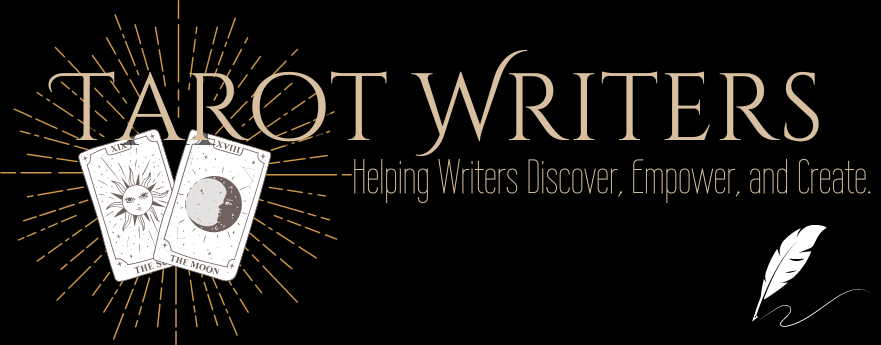

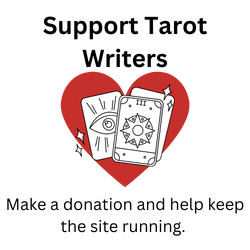
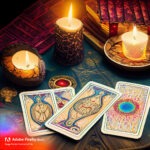 Previous Post
Previous Post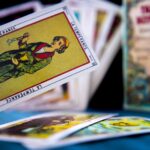 Next Post
Next Post
